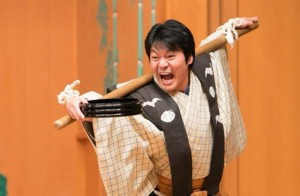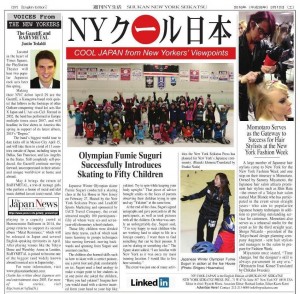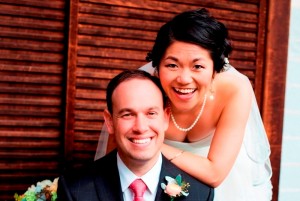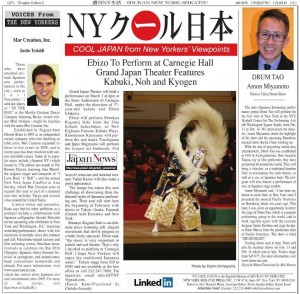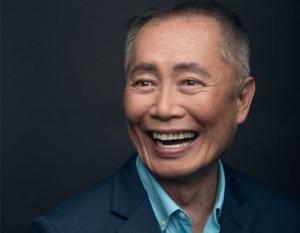Justin’s Japan — Nippon in New York: Babymetal, Anime Fan Fest, Coppé, Eir Aoi, Hatsune Miku
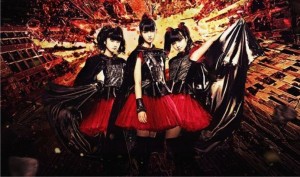
Babymetal returns to New York at the PlayStation Theater May 4. (Courtesy of PlayStationtheater.com)
By JQ magazine editor Justin Tedaldi (CIR Kobe-shi, 2001-02) for Examiner.com. Visit his Japanese culture page here for related stories.
As spring continues and the weather continues to warm, New Yorkers can enjoy activities all over the city both indoors and out.
This month’s highlights include:
Wednesday, May 4, 8:30 p.m.
PlayStation Theater, 1515 Broadway
$49.50
New York City welcomes the return of Babymetal, a genre-smashing trio of teenage girls who perform a fusion of metal and idol music dubbed kawaii(cute) metal. After playing to a capacity crowd at Hammerstein Ballroom in 2014, the group returns to support its second album Metal Resistance, now available on Amazon and iTunes. After playing venues like the Tokyo Dome and Wembley Arena in London, Babymetal is poised to become one of the biggest (and widely known abroad) Japanese musical acts today.
Friday, May 6, 8:00 p.m.
Shrine, 2271 Adam Clayton Powell Jr. Boulevard
Free
J-pop meets jazz! The J-MUSIC Ensemble is an NYC-based, jazz-rooted instrumental band that is devoted to bringing new perspectives to modern Japanese music, showcasing a fresh take on the best of J-pop, anime and video game tunes. This strikingly sonorous eight-piece band combines the elements of the electric guitar, keyboards, bass, and drums with a full horn section—saxophone, trumpet, and trombone–to deliver a full and powerful, yet dynamic, sound. Following in the jazz tradition, the horns do not play a background role in this instrumentation; instead, they are at the forefront and are put in the same role as leading singers.
May 6-8
Garden State Exhibition Center, 50 Atrium Drive, Somerset (NJ)
$32-$114, children under 10 free
OTAKU USA Magazine, the largest anime and manga magazine in the U.S., and MAD Event Entertainment producers of Comic Con in Long Beach, CA, has partnered to produce the OTAKU USA Anime Fan Fest at the Garden State Convention Center. The first year event features a star-studded guest list of voice actors, cosplayers, and more! “After producing countless events celebrating comics and pop culture, and our first convention in New Jersey having been such a success, we decided the time was right to produce an anime show” said Martha Donato, executive director and founder of MAD Events. “When we had the opportunity to co-produce this event with the number one magazine for anime and manga, we knew we had the makings of what will be one of the biggest weekends of the year for fans in New Jersey!”
For the complete story, click here.
JQ Magazine: Book Review — ‘Japaneseness: A Guide to Values and Virtues’
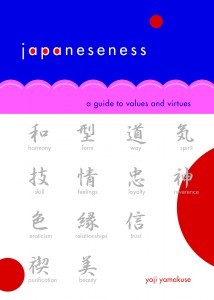
“Japaneseness serves as the perfect introduction (or reintroduction) to many aspects of Japanese society you might find refreshing, fascinating or befuddling. Or at the very least, quintessentially Japanese. ” (Stone Bridge Press)
By Rashaad Jorden (Yamagata-ken, 2008-10) for JQ magazine. A former head of the JETAA Philadelphia Sub-Chapter, Rashaad is a graduate of Leeds Beckett University with a master’s degree in responsible tourism management. For more on his life abroad and enthusiasm for taiko drumming, visit his blog at www.gettingpounded.wordpress.com.
During my time in Yamagata Prefecture, I remember learning about filial piety, a virtue that the Japanese have historically cherished. I had heard about countless other values, principles and virtues that have been important in the daily lives of Japanese people. But I had totally forgotten them until…
Picking up a copy of Japaneseness: A Guide to Values and Virtues. Written by Yoji Yamakuse, Japaneseness serves as the perfect introduction (or reintroduction) to many aspects of Japanese society you might find refreshing, fascinating or befuddling. Or at the very least, quintessentially Japanese.
Yamakuse appropriately starts off the book by introducing readers to the value Japanese tend to treasure the most: harmony. Certainly, those familiar with the country recognize the importance of harmony in ensuring that a Japanese environment operates smoothly, and Yamakuse spends the first chapter explaining how related concepts (such as hospitality, thoughtfulness and modesty) contribute to maintaining harmony. That chapter—as well as the following eight (some of which are devoted to values like trust, virtue and reverence for the gods)—are further divided into sections that address other values and beliefs that are important in Japan.
JQ Magazine: 3/11 — Where We Stand Five Years Later
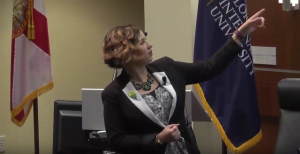
Bahia discusses the earthquake that struck Japan on March 11, 2011 at Florida International University, March 8, 2016. (Courtesy of Bahia Simons-Lane)
By Bahia Simons-Lane (Gunma-ken, 2005-07) for JQ magazine. Bahia taught at an all-girls’ high school on JET, and following her time on the program she held the position of ALT Advisor for the Gunma Board of Education from 2007-08. Bahia earned her master’s degree in International and Intercultural Education and certificate in Asian Studies from Florida International University in 2014, and is currently pursuing her Ph.D. in Curriculum and Instruction, Language, Literacy, and Culture. She is president of the Florida chapter of the JET Alumni Association.
On March 11, 2011, I woke up like it was any other day, but minutes after I walked downstairs I realized it wasn’t. Two of my friends were staying with me at the time. When we came downstairs the first thing they said to us was, “Did you hear about what happened in Japan?” We spent the rest of the day glued to the Internet and TV, horrified and shaken by the devastation caused by the earthquake and tsunami. That was five years ago.
This March 11 marked the five-year anniversary of the triple disaster that devastated the Tohoku region of Japan. The earthquake and subsequent tsunami killed thousands of people with many more displaced from their homes. Yet, like with many disasters over time, people stop thinking about what happened and it fades into the background. With the five-year anniversary approaching, I realized that I hadn’t heard a lot about how the Tohoku recovery was progressing. I knew that those without strong ties to Japan had probably forgotten all about the disaster entirely. It was time to look into how the recovery had progressed and share it with students at Florida International University who may not know much about the disaster, so I pitched the idea to the organizer of the Tuesdays Times Roundtables (TTRs) and it was agreed that it would be a great addition to the spring lineup.
FIU’s Office of Global Learning presents TTRs every week in conjunction with the New York Times. I proposed the talk for the March 8 roundtable, which seemed like perfect timing to discuss the 3/11 earthquake. The TTRs are a series of talks that focus on news items published in the New York Times and offers a closer look at some of the articles and the issues they address. The TTRs are usually well attended, and my talk was no exception, with approximately 40 people in attendance. Mostly students, they were avid listeners who asked interesting questions and made insightful comments (view the video of the complete presentation for more).
JQ Magazine: ‘Jewels of Kyoto’ Brings Geisha Tradition to Australia
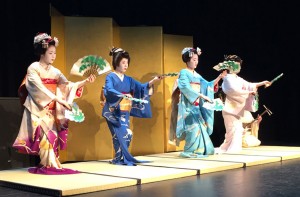
Jewels of Kyoto performed Matsu Zukushi in Sydney Feb. 23. This dance is characterized by the use of fans with a pine branch design, which represents the courage, determination and fidelity of a woman. (Eden Law)
By Eden Law (Fukushima-ken, 2010-11) for JQ magazine. Eden currently serves Country Representative for Australia and President of JETAA New South Wales.
Jewels of Kyoto was a tour of Australia and New Zealand by a group of geiko and maiko from Kyoto’s Gion district, sponsored by Japan Foundation, which ran from February 23 to March 5. Commenting for this article were Ms. Ayusa Koshi from Japan Foundation and two members of the tour group: Mr. Katsuroku-shisho of Ochaya Tomikiku, who instructs its maiko and geiko in traditional music, and Ms. Tomitae, a maiko also of Ochaya Tomikiku.
The geisha is one of the most recognisable cultural images of Japan, a symbol of the grace and beauty in Japanese traditional culture that is popular domestically and internationally. But seeing a real geisha (defined as someone who has undergone the requisite training in song, dance and social arts) is rare, and these days found only in very few places in Japan. Kyoto, of course, is best known as the place to spot geisha (or geiko, as they are known locally), and maiko (apprentice geiko) hurrying down the narrow cobbled streets of kagai (or geiko districts) in full traditional gear. As explained by Koshi, manager of Japan Foundation’s Arts and Culture Department: “Watching a geisha perform isn’t as simple as purchasing a ticket to a kabuki show. Traditionally, their artistic services were exclusive to the wealthy [who possess] the right connections, and this custom lingered until recent years.”
This is why the debut of the Jewels of Kyoto tour in Sydney was met with enthusiasm, selling out the nearly 400-seat capacity Lendlease Darling Quarter Theatre in Darling Harbour. Featuring a performance of traditional song, dance and party games (geiko are entertainers, after all) by a group of geiko and maiko, it was made possible by a collaboration between Japan Foundation and Ms. Reiko Tomimori, a prominent figure in Kyoto’s geiko world. Apart from the main stars (the geiko Hinagiku and Ryoka, and the maiko Tomitae and Tomitsuyu), there are other musicians and accompanying props and costumes.
Justin’s Japan: Nippon in New York — Nippon in New York: Musicals, origami, the GazettE, Keiko Matsui, Sakura Matsuri
By JQ magazine editor Justin Tedaldi (CIR Kobe-shi, 2001-02) for Examiner.com. Visit his Japanese culture page here for related stories.
Spring has sprung in the Big Apple, and that means one thing: a new season of sounds, colors, and spectacular performing arts to match the blossoming sakura trees throughout the city.
This month’s highlights include:
Friday, April 1, 7:00 p.m.
Leonard Nimoy Thalia at Symphony Space, 2537 Broadway
$30 advance, $25 seniors, $35 day of show
Shunzo Ohno, one of the most versatile and influential trumpeters in modern jazz, returns with ReNew, his 16th album as a leader. ReNew injects elements of traditional jazz, hip-hop, spoken word, and free jazz, creating a tapestry of modern jazz that is distinctly his own. With “recovery to discovery” in mind, the genre-defying album is a testament to those affected by catastrophic events that have taken place throughout the world including the 2011 tsunami in Japan. The concert performance will begin with the documentary film Never Defeated: The Shunzo Ohno Story, which is based on Ohno’s powerful life experiences. The music for the film centers on The International Songwriting Competition Grand Prize award song (featured on ReNew), “Musashi.”
April 4-28
Origami in Action: A New Approach to Applied Origami
RESOBOX, 41-26 27th Street (Long Island City)
Free, opening reception Friday, April 8, 7:00 p.m.
Origami is the art of paper folding, which is often associated with Japanese culture. In modern usage, the word “origami” is used as an inclusive term for all folding practices, regardless of their culture of origin. The goal is to transform a flat sheet square of paper into a finished sculpture through folding and sculpting techniques. Today, origami is truly a global phenomenon. Best known for making pop-up comic books, artist Sam Ita was asked by emerging Italian publisher Nui Nui to create a series of origami books, beginning with paper planes. Continuing the series, he collaborated with two other innovative origamists: jewelry and fashion designer Adrienne Sack, and dragon aficionado and champion pumpkin carver Paul Frasco. Their colorful works will be revealed in this special exhibition.
April 8-23
Japan Sings! The Japanese Musical Film
Japan Society, 333 East 47th Street
$12/$9 Japan Society members, seniors & students EXCEPT screening of You Can Succeed, Too + Opening Night Party: $15/$12 Japan Society members, seniors & students
This spring, Japan Society celebrates the astonishing yet little-known world of Japanese musical films. The series focuses on the golden age of the “popular song film” starring teen idols and TV stars from the ’50s and ’60s. It also reaches back to prewar singing samurai and forward to twenty-first century genre mashups—10 songful cinema gems all on 35mm! Musical performance in these films incorporates Japanese musical tradition as well as the utopian space of the Hollywood musical to create a rich commentary on the intimate and unequal relation between Japan and the U.S. This series is guest curated by Michael Raine, Assistant Professor of Film Studies at Western University, Canada.
For the complete story, click here.
JQ Magazine: JQ&A with Julia Inisan, CLAIR Programme Coordinator
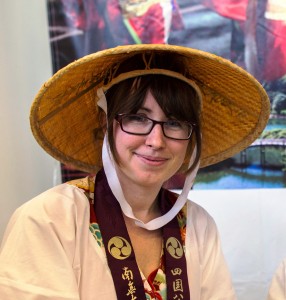
“JET Programme participants are in a very good position to match supply with demand by bringing people together, and there are many great examples of ALTs, CIRs and SEAs using crowdsourcing, social networks, recorded videos, and event planning to support their local community.” (Courtesy of Julia Inisan)
By Rashaad Jorden (Yamagata-ken, 2008-10) for JQ magazine. A former head of the JETAA Philadelphia Sub-Chapter, Rashaad is a graduate of Leeds Beckett University with a master’s degree in responsible tourism management. For more on his life abroad and enthusiasm for taiko drumming, visit his blog at www.gettingpounded.wordpress.com.
Julia Inisan (Kagawa-ken, 2013-15) first visited Takamatsu City, the capital of Kagawa Prefecture in Shikoku, in 2011 on a two-week tea ceremony study tour. That excursion served as a life-changing experience for the Frenchwoman as she fell in love with the city and decided to apply for a spot as a CIR there.
As a JET, Inisan has established herself as a valuable member of her local community, working diligently to attract tourism to the area and promote it on a global stage. But Inisan’s work in Japan has been far from limited to just Shikoku: She currently works to support the next generation of JETs as a programme coordinator for CLAIR. JQ caught up with her to discuss her history and blossoming career in Japan.
What attracted you to Japan in the first place?
As an elementary school student, I was fascinated by mythology and folklore and started reading classics like the Kojiki (Records of Ancient Matters) translated into French. I was also moved by the aesthetics expressed in works such as Murasaki Shikibu’s novel The Tale of Genji and Hayao Miyazaki’s movie Princess Mononoke, and I decided to study Japanese in high school to learn more about the archipelago’s traditional culture.
I then had the opportunity to study for one year at Higashi High School in Kitakata, where I fell in love with Fukushima Prefecture’s gorgeous landscapes, and later at Kyoto University, another life-changing experience. What kept me coming back each time was the kindness of the locals, which helped me feel at home despite the cultural differences.
What made you decide to become a CIR, and what was that like compared with your previous experience living in Japan?
I was a CIR in Takamatsu City from 2013 to 2015. I had always wanted to work for the Japanese local government and promote lesser-known areas of Japan, which is why I applied for the job. As I already had strong connections to Takamatsu, receiving my acceptance letter was one of the happiest moments of my life.
I was Takamatsu City Office’s first CIR. Without a predecessor, it was difficult for me to grasp the extent of my responsibilities at first. Fortunately, I received great advice from the CIRs working at Kagawa Prefecture and from my JET Programme sempai. Finding a good balance between work, volunteering, and private time was also challenging, but my experiences with the local community have been incredibly rewarding.
You currently work as a programme coordinator for CLAIR in Tokyo. How did that opportunity come about, and what kinds of things are you responsible for?
When my two-year contract ended in Takamatsu, my contracting organization encouraged me to apply to be a programme coordinator job at CLAIR. I felt very grateful to the JET Programme and wanted to contribute to its development while supporting Japan’s local communities at a global level. I am learning a lot from my Japanese and foreign coworkers at CLAIR, and most of all from the feedback we receive from JET participants.
I currently work on a wide variety of projects, such as planning content for Post-Arrival Orientations and the CIR Mid-Year Conference, revising publications like the CIR Handbook, and directing workshops at ALT Skill Development Conferences. Last year, I was fortunate to work in cooperation with Kagawa Prefecture to welcome back Sophie Le Berre (CIR Kagawa-ken, 1995-97), one of the 12 JET Programme alumni who returned to their former places of work as part of CLAIR’s Satogaeri Project.
I am also part of the team in charge of the JET Programme Video Contest, which started in October last year. We have received lots of awesome submissions from current and former JET participants promoting their regions from their points of view. I am greatly impressed by the quality and creativity of the videos, which you can view and vote for on the contest’s website. I hope more and more JET participants will participate in this initiative, as these videos are helping tourists discover amazing areas of Japan they’ve never heard of. If you are interested in the contest and missed the deadline for the Autumn/Winter edition, don’t worry: from April 7, 2016, you can still participate in the Spring/Summer edition.
Justin’s Japan: The GazettE and BABYMETAL
By JQ magazine editor Justin Tedaldi (CIR Kobe-shi, 2001-02) for Shukan NY Seikatsu. Visit his Examiner.com Japanese culture page here for related stories.
Located in the heart of Times Square, the PlayStation Theater will host two popular Japanese rock acts later this spring.
Making their NYC debut April 29 are the GazettE, a Kanagawa-based rock quintet that follows in the footsteps of other Gotham-conquering visual kei acts like X Japan and L’Arc~en~Ciel. Formed in 2002, the band has performed in Europe multiple times since 2007, and will headline its first shows in America this spring in support of its latest album, 2015’s Dogma.
The band’s biggest world tour to date kicks off in Mexico City April 15, and will take them to a total of 11 countries outside of Japan, including stops in Dallas, San Francisco, and Los Angeles in the States. Still completely self-produced, the GazettE continue moving forward, uncompromised in their artistic and unique worldview at home and abroad.
May 4 brings the return of BABYMETAL, a trio of teenage girls who perform a fusion of metal and idol music dubbed kawaii (cute) metal. After playing to a capacity crowd at Hammerstein Ballroom in 2014, the group returns to support its second album “Metal Resistance,” which will be released in Japan and several English-speaking territories in April. After playing venues like the Tokyo Dome and Wembley Arena in London, BABYMETAL is poised to become one of the biggest (and widely known abroad) musical acts in Japan today.
For more information, visit www.playstationtheater.com.
JQ Magazine: Book Review — ‘The Japanese Lover’

“The Japanese Lover has its ups and downs, but it does serve as an eventful tour of various aspects of 20th century history.” (Atria Books)
By Rashaad Jorden (Yamagata-ken, 2008-10) for JQ magazine. A former head of the JETAA Philadelphia Sub-Chapter, Rashaad is a graduate of Leeds Beckett University with a master’s degree in responsible tourism management. For more on his life abroad and enthusiasm for taiko drumming, visit his blog at www.gettingpounded.wordpress.com.
We might be keeping fascinating mementos from our daily lives that if discovered, might stun many people.
Certainly, letters documenting something shocking (well, shocking during a certain period of history) would classify as that. Isabel Allende’s The Japanese Lover highlights one woman’s relationship with a Japanese national during her eventful life.
The story’s protagonist is Alma Belasco, a native of Eastern Europe was sent to live with well-to-do relatives in San Francisco when she was young. During the latter years of Alma’s life, she lives with a caretaker named Irina Bazili, who learns about an important figure who shaped Alma’s life and is described in the title of the book: a man named Ichimei Fukuda. Ichimei could also be described as a secret lover because the two had to keep their romance on the down low as it occurred during the height of World War II when people of Japanese descent were considered a threat to American society. The Japanese Lover also takes a journey not only through Alma’s life, but Irina’s as well as Ichimei’s.
JQ Magazine: JETAA Sakura Sweethearts
By Rick Ambrosio (Ibaraki-ken, 2006-08) for JQ magazine. A dusty old fixture of the JET Alumni Association of New York (JETAANY) community, Rick manages projects at a software company by day and sends drafts late into the night as a writer for JQ.
Well, folks, it’s that time of year again. Maybe you have a special someone you’re going out with on Valentine’s Day. Perhaps you’re grabbing a bunch of friends and doing a “singles karaoke night” instead (Like some JETAANY folks are). Maybe you forgot and this is a great reminder to get some flowers and make a dinner reservation ASAP. Either way, you can only hope for the best.
But some people seem to luck out in love, and I have to say I’m happy when it’s people I like. And what kind of people do I often like? JETs. That’s right, folks, we are going to interview some Cupid-conquering JET couples and get to know how they met, where they came from, and maybe a little advice on how to spark a little JET romance of your own. So if you find yourself at that next JET alum enkai thinking “what if…?,” this might be for you.
Chau Wing Lam (Gunma-ken, 2005-07) and John Ciocco (Saga-ken, 2006-07)
Did you meet on while on JET? Or after JET through an alumni meeting?
We met during a JETAANY alumni event—a boat cruise on August 20, 2008.
How long have you been together?
We’ve been together since 2008, married in 2014.
Was it your mutual love for Japan that brought you together, or something else?
Mutual love for Japan gave us something to start talking about, then the rest of our conversation filled in from there. We actually got married at the Shofuso Japanese House and Garden here in Philadelphia to commemorate what brought us together.
Have you guys ever had to do the “distance” thing? If so, what was that like?
Yes. When we first met, Chau was living in Hoboken and John was living in South Jersey. The commute was about two hours each way, so we only saw each other on weekends. We had some challenges at first being that far away and with the both of us trying to cultivate a new relationship, but we worked through it. Chau moved to Philly in the fall of 2009, shortening the commute to about half an hour—and now we’re married with a four-and-a-half-month-old baby!
Has being on JET made you a “stronger” couple? If so, how?
It’s a shared history that grounds us and helps us remember the many commonalities we have despite our inherent differences. We both learned to be self-deprecating to try and get our students interested in English, and that is definitely a quality that we love about each other and helps us through arguments that arise. Relationships aren’t easy, but we work at it every day—so yes, in some ways, knowing how far out of our comfort zone we’re able to stretch helps us.
What advice do you have for other budding JET couples?
Always remember to have fun with each other as you did in Japan—ALWAYS. And use your commonalities to help bridge the gap when the divide seems too wide!
Justin’s Japan: Nippon in New York — Kamakura, TAO, Kimono Fashions, Noh, Kyogen
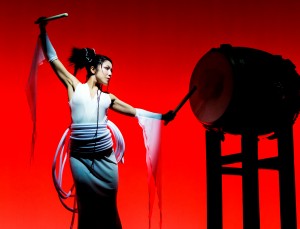
TAO Drumheart comes to NYU Skirball Center for the Performing Arts Feb. 11-14. (Courtesy of Matt Ross Public Relations)
By JQ magazine editor Justin Tedaldi (CIR Kobe-shi, 2001-02) for Examiner.com. Visit his Japanese culture page here for related stories.
Stay warm this winter with some hot local events, from an exhibition that will transport you to another time, some cool late night jazz celebrating the best of two different cultures, and a fashion show and traditional performances you won’t want to miss.
This month’s highlights include:
Feb. 5-6, 11:15 p.m.
Patrick Bartley—Parallel Worlds: Japanese and American Music in the 20th Century
Dizzy’s Club Coca-Cola, Broadway and 60th Street, 5th floor
$10, $5 students (Friday); $20, $10 students (Saturday)
Jazz at Lincoln Center’s Late Night Session performances feature some of jazz’s most talented up-and-comers. Following his three nights of Bix and Tram: A Retrospective held earlier in the week, Parallel Worlds offers a brief, yet insightful look at the musical relationship between Japan and America, all performed by talented young musicians. The leader of New York’s own J-MUSIC Ensemble, Bartley (who performed with Jon Batiste and Stay Human on The Late Show with Stephen Colbert in January) will examine the important periods between the earliest recorded music (1920s-30s) and the turning point for all popular music around the world in the 1960s—a story told with jazz as its orator.
Feb. 9-May 8
Kamakura: Realism and Spirituality in the Sculpture of Japan
Asia Society, 725 Park Avenue
$12, $10 seniors, $7 students, free for members and on Fridays 6:00-9:00 p.m.
With over thirty masterpieces from the Kamakura period (1185–1333) from private and museum collections in North America and Europe, Kamakura is the first exhibition to look beyond the aesthetics and technical achievements of these remarkable sculptures, and specifically examine the relationship between realism and the sacred empowerment of these objects. The exhibition explores how sculptures are “brought to life” or “enlivened” by the spiritual connection between exterior form, interior contents, and devotional practice, reflecting the complexity and pluralism of the period. Kamakura marks the first major loan show of Kamakura sculpture in the United States in more than thirty years.
Feb. 11-14
NYU Skirball Center for the Performing Arts, 566 LaGuardia Place
$45-$75
Direct from TAO’s successful, sold-out world premiere run of at the Edinburgh Festival Fringe, TAO comes to tour North America. Their new show, Drumheart—making its world premiere in New York—is their newest show bringing you athletic bodies and contemporary costumes combined with explosive Taiko drumming and innovative choreography. directed by Amon Miyamoto (Pacific Overtures) and featuring costumes by Junko Koshino and stage design by Rumi Matsui (both Tony nominees), TAO has critics raving about their extraordinary precision, energy, and stamina. With hundreds of sold-out shows and more than six million spectators, TAO has proven that modern entertainment based on the timeless, traditional art of Japanese drumming, entertains international audiences again and again.
For the complete story, click here.
JQ Magazine: New York Pledges Allegiance to George Takei at Japan Society
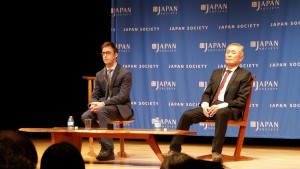
George Takei (right), with moderator Kermit Roosevelt at Japan Society, New York, Jan. 2016. (Ann Chow)
By Lyle Sylvander (Yokohama-shi, 2001-02) for JQ magazine. Lyle has completed a master’s program at the School of International and Public Affairs at Columbia University and has been writing for the JET Alumni Association of New York since 2004. He is also the goalkeeper for FC Japan, a New York City-based soccer team.
On Jan. 25, George Takei participated in a talk at Japan Society in New York. Best known for playing the role of Sulu on the original Star Trek and its movie incarnations, Takei has embarked on a second career as a social rights activist. Takei’s childhood in a pair United States internment camps for people of Japanese descent during World War II provided the focus for the conversation (entitled From Barbed Wire to Broadway), which was moderated by Kermit Roosevelt, a constitutional law scholar at the University of Pennsylvania (and great-great grandson of President Theodore Roosevelt). Takei is also concurrently appearing on Broadway in a musical inspired by his internment experiences called Allegiance (book by Marc Acito, Jay Kuo and Lorenzo Thione; music and lyrics by Jay Kuo). The show, also starring Lea Salonga and Telly Leung, is playing at the Longacre Theatre through February 14.
There is no doubt that Takei’s childhood experiences formalized his worldview and search for justice. He spoke at length of his memories of being forced out of his Los Angeles home at the age of five and relocated to the Rohwer War Relocation Center for Internment in Arkansas, and later, the Tule Lake War Relocation Center in central California. Takei also put his personal experiences within a historical and political context: After the bombing of Pearl Harbor, anti-Japanese paranoia made all U.S. citizens of Japanese heritage suspect. Due process of law was completely suspended as Japanese Americans were forcibly removed from their homes without charge or evidence. Once in the internment camps, the prisoners had to forswear loyalty to the Emperor of Japan and pledge allegiance to the United States.
Justin’s Japan: Mar Creation, Inc.
By JQ magazine editor Justin Tedaldi (CIR Kobe-shi, 2001-02) for Shukan NY Seikatsu. Visit his Examiner.com Japanese culture page here for related stories.
Those who have attended intimate Japanese arts performances in the city—such as last November’s sold-out shows of “IN THE BOX” at the Martha Graham Dance Company featuring Bessie Award winner Miki Orihara—might be familiar with the name Mar Creation, Inc.
Established by Nagoya-born Hiroshi Kono in 2003 as an independent record company with him doubling as label artist, Mar Creation expanded its focus to live events in 2008, and in recent years has been involved with various charitable causes. Some of its popular series include j-Summit NY (which hosted its 27th edition last month at The Bowery Electric featuring Alan Merrill, the original singer and composer of “I Love Rock ‘n’ Roll”), and the annual New York Japan CineFest at Asia Society, which Mar Creation aims to expand this year as part of a national tour that includes Tokyo and several U.S. cities.
A music writer and journalist, Kono says that his other ambitions as a producer include a collaboration with Japanese calligrapher Setsuhi Shiraishi on her upcoming solo exhibition in New York and Washington, D.C. featuring workshop/performance shows with live musicians in multiple cities this summer and fall; Fukushima-related lectures and film screening events; Brazilian music festivals to celebrate the Rio 2016 Olympics; Japanese cherry blossom festivals in springtime; and anime/comic book conventions nationwide and abroad.
For more information, visit www.marcreation.com.
Justin’s Japan: George Takei Comes to Japan Society
By JQ magazine editor Justin Tedaldi (CIR Kobe-shi, 2001-02) for Examiner.com. Visit his Japanese culture page here for related stories.
Start 2016 off right by heading down to Japan Society for some fantastic new year’s fare. This month’s events celebrate the power of theater, with productions that examine international relations between East and West, celebrating a century of growing diversity but also spotlighting a stormy past. Treat yourself and catch a break from the cold.
This month’s highlight:
Monday, Jan. 25, 6:30 p.m.
George Takei: From Barbed Wire to Broadway
Japan Society, 333 East 47th Street
SOLD OUT. Limited tickets may be released; please call the box office on January 19 at (212) 715-1258 to check availability.
“Too few people know about that dark chapter of American history,” film and television star, pop culture icon and social media powerhouse George Takei (Star Trek, Heroes) told The Daily Show‘s Jon Stewart in 2014, “when American citizens of Japanese ancestry were summarily rounded up with no charges, no trial no due process—the core pillar of our justice system—and put in barbed wire prison camps simply because we happened to look like the people that bombed Pearl Harbor.” In George Takei: From Barbed Wire to Broadway, Takei shares memories from the troubling chapter of American history when some 120,000 innocent Japanese-Americans were forcibly relocated from their homes.
For the complete story, click here.
JQ Magazine: NHK World, Your 24-Hour Guide to Japan
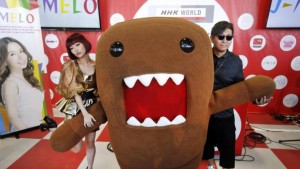
Pop singer and model Yun*chi and DJ Taku Takahashi of m-flo with Domo, NHK’s mascot, at Waku Waku +NYC in Brooklyn, Aug. 2015. The performers are frequent guests of NHK World’s J-MELO, Japan’s only music program recorded entirely in English. (Jason DeCrow/AP Images for NHK WORLD TV)
By Rashaad Jorden (Yamagata-ken, 2008-10) for JQ magazine. A former head of the JETAA Philadelphia Sub-Chapter, Rashaad is a graduate of Leeds Beckett University with a master’s degree in responsible tourism management. For more on his life abroad and enthusiasm for taiko drumming, visit his blog at www.gettingpounded.wordpress.com.
You surely watched NHK while you were living in Japan. Whether you understood the content was another story, of course. But with the right cable provider, you might be able to enjoy Japan in a way that you were unable to during your JET days, thanks to NHK World.
NHK World serves as the organization’s international broadcast service and features English-language programming devoted to Japanese news, sports, cuisine and culture. Even if your cable provider doesn’t have NHK World, the network streams all of its programming around the clock on its official website, and you can also download their apps to your smartphone or tablet.
What might you see on NHK World? Here are five programs that could tickle your fancy:
Hosted by Ayako Kisa, Sports Japan has profiled not only sports traditionally associated with Japan, such as sumo and kendo—and those not-so-traditionally associated with Japan, like beach soccer and unicycling. Episodes of Sports Japan broadcast highlights from a certain competition in the featured sport while Kisa interviews a journalist or prominent figure in that sport, such as Alexander Bennett (the coach of New Zealand’s national kendo team and editor-in-chief of Kendo World) in a recent episode devoted to kendo. The program is a fascinating look into what sports are practiced in Japan and who could emerge as the country’s next elite athletes.
JQ Magazine: JQ&A with James Rogers on Smart Smart Language Apps
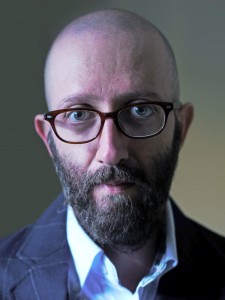
“Some in government suggest that the path to citizenship includes learning English. What we intend to do is provide all of our apps to these learners, but entirely for free. It is a big dream of mine to give back to society in such a way.” (Courtesy of James Rogers)
By Rashaad Jorden (Yamagata-ken, 2008-10) for JQ magazine. A former head of the JETAA Philadelphia Sub-Chapter, Rashaad is a graduate of Leeds Beckett University with a master’s degree in responsible tourism management. For more on his life abroad and enthusiasm for taiko drumming, visit his blog at www.gettingpounded.wordpress.com.
For many of us, our time teaching Japanese people the finer aspects of English was limited to…well, the JET Program. But that hasn’t been the case for James Rogers (Aichi-ken, 2003-06).
As the president of Kyoto JALT and the founder and editor of the Kyoto JALT Review, Rogers has utilized his comprehensive knowledge of English-language education to develop Smart Smart, a series of apps containing materials geared towards Japanese learners of English and vice versa (as well as other language learners). Among their features, the apps contain more than 100,000 words of content, a textbook using modern music to study English, and pronunciation exercises for native Chinese, Korean and Japanese speakers.
To learn more about how Smart Smart has thrived and what’s ahead, JQ caught up with Rogers, who also happens to be a Ph.D. candidate doing corpus linguistics research.
How did your experience as a JET inspire you to launch Smart Smart?
The JET Program certainly was my first foot in the door in regards to English education in Japan—without it, I do not think any of this would have been possible. So, in that regard, I view my experience on JET as an essential aspect to my current successes with Smart Smart and my career teaching English at the university level. I think the JET Program is a wonderful opportunity for foreign teachers and Japanese students.
What inspired you to create Smart Smart?
Well, we really are still just in the beginning stages of really taking advantage of technology in education, and I just looked at what is currently available and realized that I could totally improve upon it drastically. Also, since I am a real teacher/researcher and do not depend on this to make a living, I could provide it for nearly ten times cheaper than some technology that is currently available. For example, over 30 volunteer researchers and translators helped me to create the content for over five years. Just the apps existing and the papers we’ve all published together helps all of our careers, so that is the benefit for the team. In addition, some team members already have tenure and Ph.D.s and just wanted to be part of something that truly had the potential to improve upon English education. Since I didn’t need to pay anyone to create the resources, the price we can sell them at can be kept at the bare minimum. Originally, I intended to actually release everything for free, but then I had the opportunity to collaborate with Ernie Thomason, the creator of the best-selling Flashcards Deluxe, and realized that not only can I provide the best quality content, but also the most cutting edge technology as well for mere pocket change. Without Ernie, none of this could have been possible.
Your apps contain well over 150,000 words of content. How often is the content updated?
We update the apps themselves—in fact, just last week we added a great new feature to the quiz function in the app. But the content, other than finding typos, is fixed. For example, the app 英語マスター1万/English Master 10,000 itself has over 100,000 words of example sentences. Each sentence highlights how to use one of the chunks it teaches (all chunks and sentences have translations as well). My Ph.D. research looked at years’ worth of corpus data from the Corpus of Contemporary American English to identify these chunks. So, basically, these are the high-frequency chunks of English according to the corpus. That’s a fact that doesn’t change, and thus no updating of content is really necessary. You know, chunks like “along those lines,” or “to make a statement,” or “a big deal”…these chunks aren’t going anywhere.

